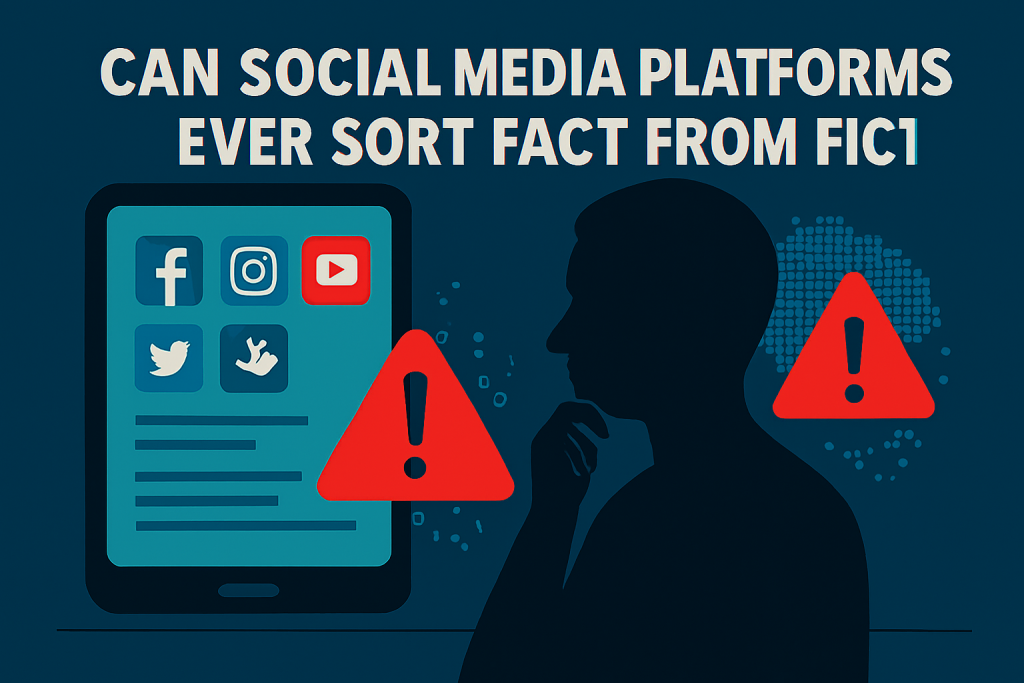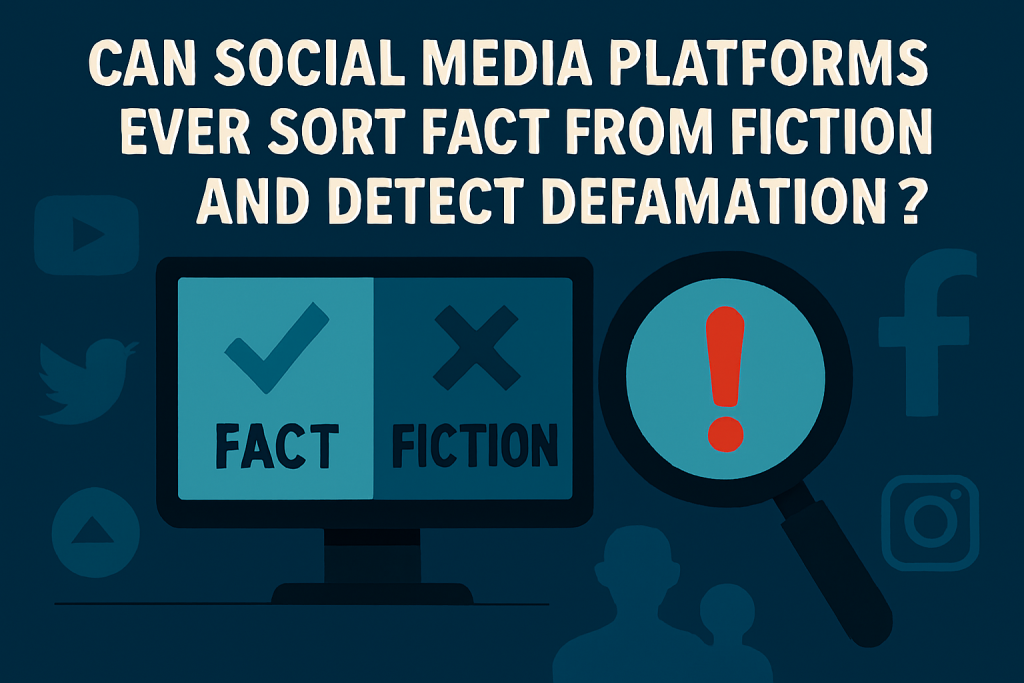🧠 Can Social Media Platforms Ever Sort Fact from Fiction—and Detect Defamation?
In the digital age, truth isn’t just contested—it’s algorithmically buried.
Social media platforms have become the world’s largest publishers, yet they operate without the editorial rigor of traditional media. Millions of posts are shared every hour, many of them containing misinformation, conspiracy theories, or direct defamation. The question is no longer whether these platforms contribute to reputational harm—it’s whether they can ever be trusted to prevent it.

📱 The Scale Problem
Platforms like X (formerly Twitter), Facebook, and TikTok process hundreds of millions of posts daily. The sheer volume makes manual review impossible. Even with artificial intelligence, the challenge is staggering:
- Language ambiguity: Defamation often hides behind sarcasm, implication, or coded language
- Context collapse: Posts are stripped of nuance, making it hard to judge intent
- Rapid reposting: Harmful content spreads faster than it can be flagged or removed
As one researcher put it, “The volume of content published on Twitter in one single day equals that of a major newspaper in 182 years”.
🧠 Why Defamation Is So Hard to Detect
Unlike misinformation, which can be fact-checked, defamation is often personal, emotional, and context-dependent. It involves:
- False claims about individuals
- Narrative construction using public records or speculation
- Tagging institutions to imply legitimacy
- Emotional manipulation to drive engagement
Platforms struggle to distinguish between genuine criticism and reputational sabotage—especially when the attacker uses real data to build false narratives.

🔍 What the Research Says
Studies from Oxford and MIT show that:
- Misinformation spreads faster than truth, especially when emotionally charged
- Users often share content based on outrage or identity, not accuracy
- Simple interventions—like prompts to consider truthfulness—can reduce misinformation sharing
But defamation requires more than nudges. It demands contextual intelligence, pattern recognition, and cross-platform tracking—none of which social media platforms currently offer at scale.
⚠️ The Consequences of Inaction
When platforms fail to detect defamation:
- Victims suffer reputational damage, emotional distress, and even physical risk
- False narratives become entrenched, influencing public perception and search results
- Legal systems struggle to keep up, especially across jurisdictions
In some cases, attackers escalate from digital obsession to real-world harassment—targeting not just the victim, but their family, employer, or legal counsel.
🛠️ What Needs to Change
To truly sort fact from fiction and detect defamation, platforms must evolve:
- Hybrid moderation systems: Combine AI with human review for high-risk content
- Context-aware tagging: Flag posts that misuse public records or imply criminal behavior
- Cross-platform coordination: Share defamation signals across networks
- Victim-centered tools: Allow individuals to log, track, and rebut harmful content
This isn’t just a tech problem—it’s a structural one. It requires collaboration between platforms, governments, and defense systems built by users themselves.
🔚 The Takeaway
Social media platforms weren’t built to adjudicate truth. But in a world where reputations are destroyed in seconds, they must evolve—or risk becoming engines of harm.
Until then, the burden falls on victims to build their own systems. To track, document, and defend. Because in the digital age, truth isn’t just contested—it’s engineered.
Views: 1